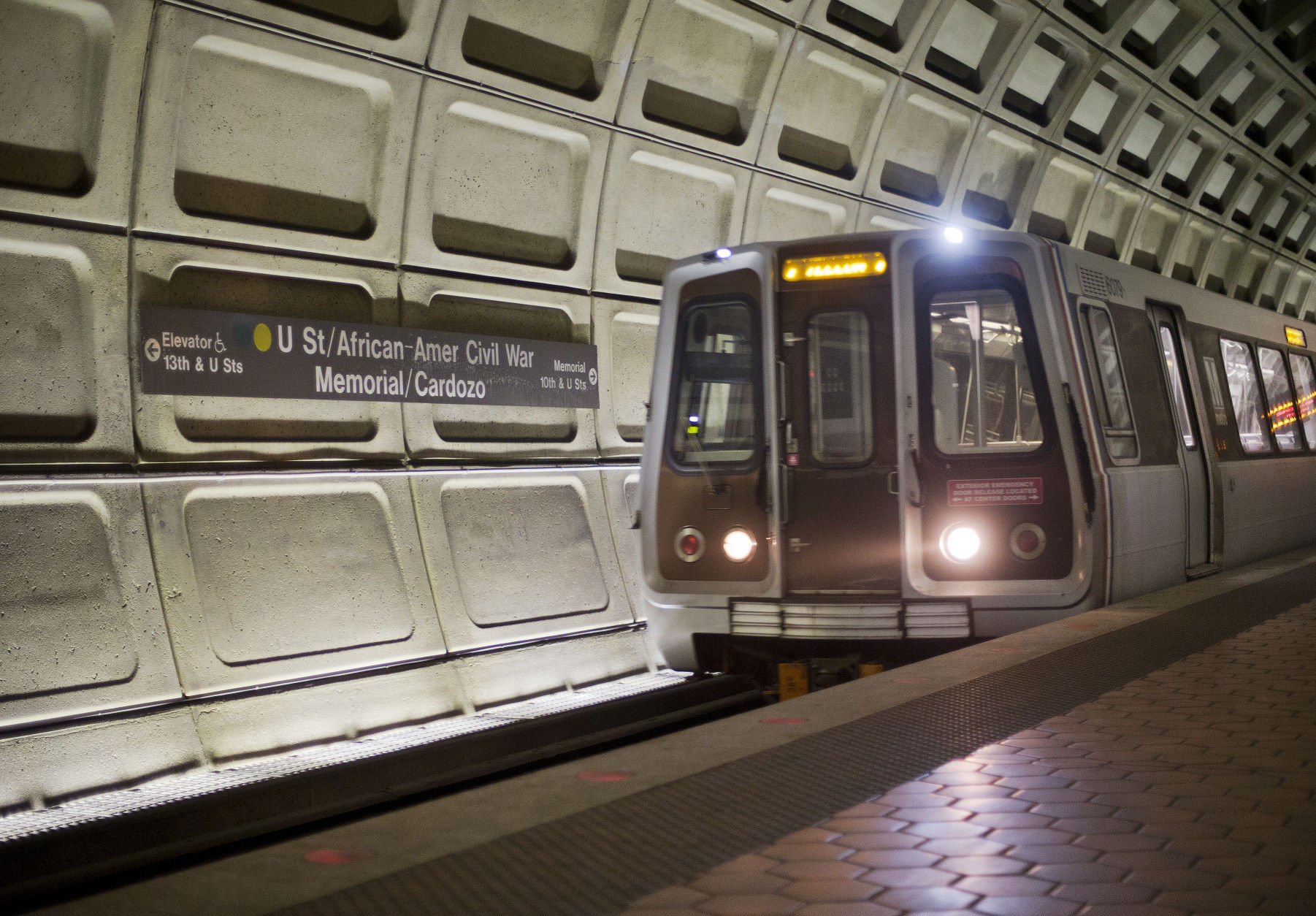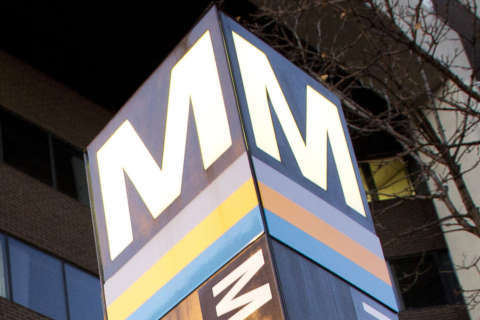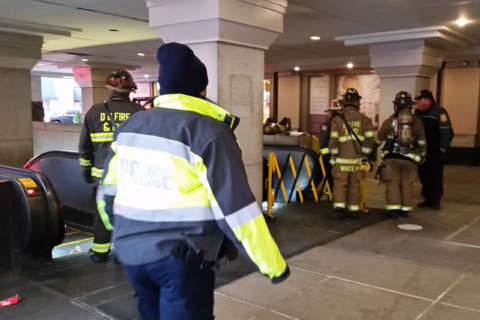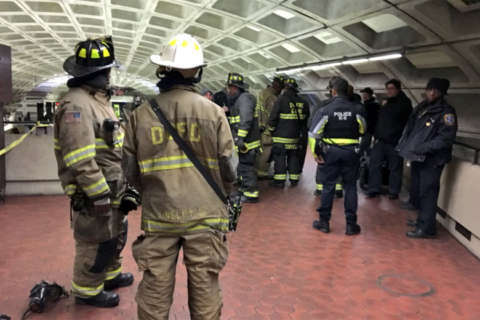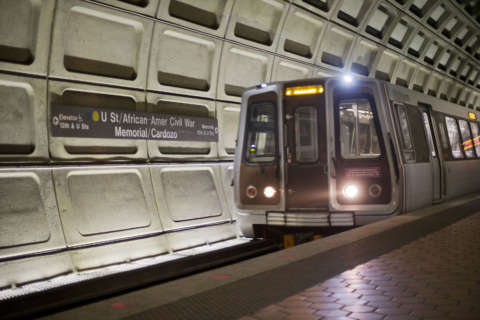
WASHINGTON — At 6 p.m. Wednesday, Metro holds its only public hearing on a $3.1 billion budget proposal for the year starting July 1 and its associated long-term capital maintenance and spending plans.
While many riders who are commenting online or who are set to speak at the Metro headquarters hearing are focused on continued service cuts and no additional fare increases, the capital spending plan includes a series of notable projects and milestones. (One rider fee increase is a parking pilot program that begins Monday.)
The capital budget calls for nearly $1.28 billion in spending in the first year, and a total of $8.53 billion over six years.
The work includes repairs to crumbling bridges that could lead to more long-term work zones; continued progress on cell service in Metro tunnels and an upgraded radio system; the completion of the 7000-series railcar fleet; fare collection upgrades; and new police projects, including Tasers and additional closed-circuit cameras.
More new trains
Metro is near having 500 new 7000-series railcars in the system, and expects the last of the 748 to be delivered by spring 2019.
The 1000- and 4000-series cars have already been removed from passenger service (Metro still has six 1000-series cars as a “money train” to collect cash from stations during off hours, and several dozen 4000-series cars are still awaiting disposal). All of the 5000-series cars are expected to be removed from service in the next year or so as the final 7000 series-cars are pressed into service.
More of the new trains will mean a few more daily eight-car trains scheduled on the Yellow, Green and Silver Lines, because Metro only runs the new trains in eight-car sets. Including spares, Metro expects to need 1,003 railcars available each weekday to ensure full service in the year that begins July 1.
The total cost of the 7000-series order is $1.7 billion, which includes ongoing warranty and performance payments down the line and some of the cost of disposing old cars.
Other cars remaining in the fleet will see changes too, including the removal of carpeting from all 6000-series cars.
Plans to replace the next-oldest set of cars, the 2000 and 3000 series, have been slowed somewhat, which has lowered the amount of money planned for the project in the coming budget years.
“The previous plan assumed that WMATA would significantly accelerate the purchase of additional railcars. After further consideration of fleet short and long-term requirements, staff determined that the preferred path is to update the existing railcar specifications first and then initiate a new procurement for an 8000-series vehicle,” staff wrote Metro Board members in response to a question.
That puts the next round of new railcars at least several years off, with a contract expected to be awarded sometime in late 2019 or early 2020.
“Factors that will impact the size of the 8000 series railcar procurement include, but are not limited to, ridership forecasts and projected peak-period service levels,” Metro staff wrote.
Metro has cut back on scheduled service over the last few years.
Tasers, camera upgrades
After complaints about pepper spray use in stations against suspected fare evaders, Metro Transit Police plan to buy Tasers or similar stun guns for use in the system.
The agency wants to “deploy Tasers to patrol officers to provide a less-lethal capability for officers that is superior to pepper spray for use in confined spaces such as rail stations,” the budget proposal said.
The plan calls for $1.44 million over six years for 2,058 “nonlethal” weapons and $1.2 million for some body camera technology. Metro police also plan to improve documentation of incidents and information sharing and “enhance access control at Metro facilities.”
Metro police already have an extensive supply of ammunition and guns for officers, and the first Taser purchases are already underway.
“MTPD is among the last departments in the region to acquire this tool,” Metro spokesman Richard Jordan said in an email.
In the year starting in July, Metro plans to complete closed-circuit camera upgrades at the Friendship Heights, Grosvenor, White Flint, Brookland, Naylor Road, Landover, Takoma and Silver Spring stations.
Metro police also plan to add a dedicated youth liaison coordinator focused on outreach and safety, as one part of increased recruiting activity.
Metro plans to add “fire-life safety positions” focused on supporting first responders and regional training efforts.
Today, the Metro Transit Police Department budget includes 462 sworn officers, 144 special security police and 88 civilians.
Fare collection changes
After canceling a planned overhaul of fare gates and other systems, Metro is now focusing on boosting power and communications links at stations that could actually support more high-tech fare systems.
Metro has not settled on plans, but still hopes to have fare system upgrades rolling out within the next six years.
The budget calls for a “shift to more self-directed customer service” through Metro website upgrades and a new mobile app while also keeping up existing fare gates.
In the coming year, Metro plans to start an overhaul of the SmartBenefits website and begin the buying process for a new fare gate system.
The details of a new fare gate system that could allow for a variety of payment options beyond a SmarTrip card are being finalized now, and are expected to emerge this spring.
Metro retired paper fare cards in early 2016.
Aside from the goal of a more-updated look, Metro is looking to improve fare gate designs to cut down on fare evasion.
The new fare system would include new fare vending machines and exit-fare machines across the system, each of which would accept debit and credit cards. Exit-fare machines that only accept cash have been an issue for some riders since Metro stopped letting riders go slightly negative beginning Jan. 8.
Any upgrade would also be rolled out on Metrobuses and likely for other transit systems across the region. That is scheduled to include Maryland’s Purple Line.

